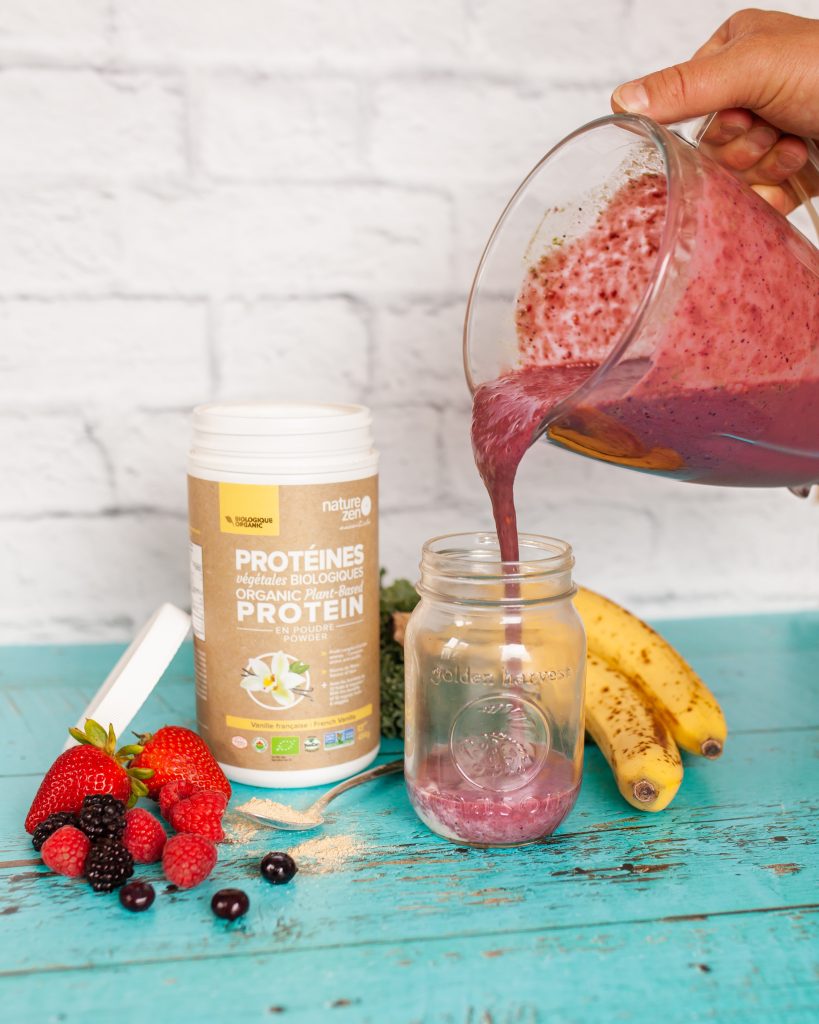Physical Address
304 North Cardinal St.
Dorchester Center, MA 02124
Physical Address
304 North Cardinal St.
Dorchester Center, MA 02124
There are still many misconceptions about veganism and vegetarianism, such as the notion that a plant-based diet does not include enough protein. In this article, we looks into this allegation and demonstrates that plant-based diets are completely adequate for satisfying everyone’s protein needs.
Proteins are intricate chemical mixtures made up of numerous different amino acids. In order to make proteins, the human body needs 21 amino acids, at least 9 of which it is unable to generate. We refer to these as necessary amino acids. It follows that maintaining the body’s own protein structures requires a constant supply of these amino acids from dietary proteins.
There are a variety of roles that proteins play inside the human body and its systems. The formation of new tissue is by far the most significant contribution they provide to the body. One of the many roles that structural proteins play in the body is that of fundamental building blocks for skeletal muscle, neuron, and connective tissue. On the other hand, mass transfer is accomplished by transport proteins within the body. One example of a transport protein is haemoglobin, which is a component of blood. The category of protective proteins includes both the antibodies that are produced by the immune system and the protein fibrinogen, which is responsible for the clotting of blood. Proteins can also be found in a wide variety of hormones and enzymes, both of which play key regulatory roles in the body.

The following are the daily recommended values for the amount of protein that can be obtained through consuming mixed foods, as determined by the committee of the European Food Safety Authority (EFSA):
Proteins play an important role in the formation, function, and metabolism of all living cells and tissues; therefore, a lack of proteins can lead to a variety of illnesses of how the body functions. In adults, an insufficient quantity of protein can lead to diminished immune defense, reduced wound healing, and a reduction in muscle mass. Additionally, protein deficiency might slow down the healing of wounds. Mental disability is something that can happen in childhood as well. Protein deficiency, on the other hand, is exceedingly unusual in industrialized countries, but it is more prevalent in underdeveloped countries whose populations are plagued by malnutrition.
Pulses (lentils, peas, and beans) and cereals (rice, oats, millet, wheat, spelt, and rye) are two types of vegetables that are particularly significant in terms of their role as sources of protein. Soybeans are the most important of the three. Products derived from soybeans, such as tofu and tempeh, are examples of foods that are considered to have a high protein content. A very high concentration of protein can also be found in pseudocereals (such as amaranth, buckwheat, and quinoa), nuts, almonds, and seeds.

Several factors determine how much of a contribution to human nutrition is made by the protein that comes from meals. In addition to the amount of protein that the food contains, it is also vital to consider how easily the protein can be digested and the amino acid constitution of the protein.
All of the necessary amino acids are present in both animal and plant proteins. However, the amounts that they contain are different. The biological value of a meal protein increases in direct proportion to how well its amino acid composition matches the requirements of the human body. Less of a protein must be taken to satisfy protein needs if it has a higher biological value since it is more likely to be transformed into the body’s own protein. With some exceptions, such as soybeans, potatoes, rice, and rye, proteins derived from animal products often have a higher biological value than those derived from vegetables. However, by combining various foods, the biological value is significantly improved because their individual amino acids complement one another. The distribution of amino acid supply throughout the day is more significant than the amino acid profile in a single meal. Protein needs can be easily satisfied by plant foods if a person gets enough protein and calories throughout the course of the day from a range of vegan protein sources, such as pulses and wholemeal cereals, pulses and nuts, or pulses and seeds.
The “protein digestibility-corrected amino acid score” (PDCAAS), which considers both the amino acid content and the digestibility of the protein, is a good indicator of digestibility. Less protein needed to be taken to meet protein requirements as PDCAAS increases because protein can be digested more simply and fully. Proteins from animals are typically easier to digest than proteins from plants since most vegetable proteins are less easily digested due to dietary fiber and strong cell walls. Although many plant sources of protein are still rather easily digestible, it can be considerably improved with more processing and adequate chewing.
Food’s biological value and digestibility are essentially irrelevant when attempting to assess its healthfulness. Unsaturated fatty acids, carbs, dietary fiber, phytochemicals, vitamins, and minerals all contribute significantly. In this aspect, plant protein sources typically outperform animal protein sources because the latter sometimes include high levels of harmful saturated fatty acids. A higher intake of vegan protein was linked to a decreased death rate, per a Harvard Medical School study released in 2016. Participants’ risk of all-cause death during the study period was reduced by 10% by increasing the number of calories from plant protein by just 3%. The mortality risk decreased by further 2% when compared to cardiovascular illnesses alone. On the other hand, if the participants’ dietary intake of animal protein increased by 10%, their chance of dying from cardiovascular disease increased by 8%.